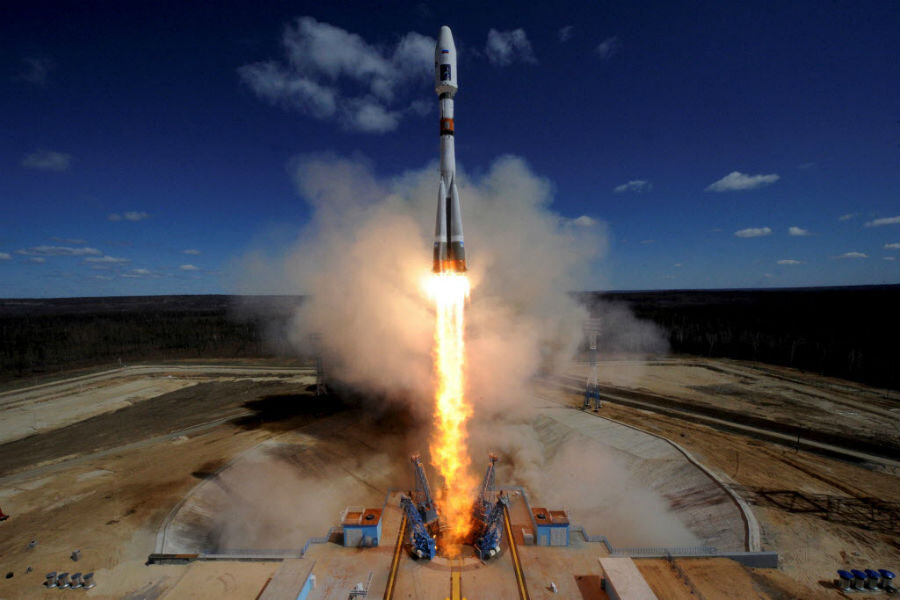ASAT missile test by Russia endangers space station crew - NASA

Tuesday, November 16, 2021 | Chimniii Desk
Key Highlights
- Russia's anti-satellite missile launch on Monday created a debris field in low-Earth orbit, endangering the International Space Station and posing a threat to space activities for years, according to US authorities.
- According to experts, testing weapons capable of shattering satellites in orbit creates clouds of shards that can crash with other objects, triggering a chain reaction of projectiles through Earth orbit.
- "Russia's direct-ascendant anti-satellite missile strike on one of its own satellites generated more than 1,500 pieces of "trackable orbital debris" and is likely to spawn hundreds of thousands of smaller fragments, according to the US Space Command.
- He added that the debris cloud posed a threat to a separate Chinese space station now under construction and its three-member crew of "taikonauts.
- Russia is far from the first country to perform space-based anti-satellite testing.
Advertisement

Russia's anti-satellite missile launch on Monday created a debris field in low-Earth orbit, endangering the International Space Station and posing a threat to space activities for years, according to US authorities.
NASA said the seven-member space station crew - four American astronauts, one German astronaut, and two Russian cosmonauts - were told to take refuge in their docked spacecraft capsules for two hours following the test as a precautionary measure to enable for a speedy escape if necessary.
The research lab, which orbits roughly 250 miles (402 kilometres) above Earth, continued to fly through or near the debris cluster every 90 minutes, but NASA specialists judged that after the third pass, it was safe for the crew to return to the station's interior.
According to NASA, the crew was also directed to temporarily close hatches to numerous modules of the International Space Station (ISS).
"NASA will continue to monitor the debris over the next few days and weeks to ensure the safety of our crew in orbit," NASA Administrator Bill Nelson said in a statement.
According to experts, testing weapons capable of shattering satellites in orbit creates clouds of shards that can crash with other objects, triggering a chain reaction of projectiles through Earth orbit.
Advertisement
THOUSANDS OF SCATTERED FRAGMENTS
/cdn.vox-cdn.com/uploads/chorus_asset/file/19901161/acastro_190809_1777_space_debris_0001.jpg)
The Russian military and defence ministry did not immediately respond to requests for comment. The Russian space agency Roscosmos dismissed the danger in a tweet.
"The orbit of the object that compelled the crew to evacuate the station today has shifted away from the ISS orbit," Roscosmos tweeted. "This station is located in a green zone."
Russia's direct-ascendant anti-satellite missile strike on one of its own satellites generated more than 1,500 pieces of "trackable orbital debris" and is likely to spawn hundreds of thousands of smaller fragments, according to the US Space Command.
"Russia has displayed a willful disrespect for the security, safety, stability, and long-term viability of the space domain for all nations," US Army General James Dickinson, head of the space command, stated.
The missile test debris "will continue to pose a hazard to activities in outer space for years to come, endangering satellites and space missions and necessitating more collision avoidance manoeuvres," he warned.
Secretary of State Antony Blinken of the United States of America criticised the missile test as "rash and irresponsible." Pentagon spokesman John Kirby said the exercise demonstrated the importance of firmly establishing space behaviour standards.
"It is unfathomable that Russia would jeopardise not just American and international partner astronauts aboard the International Space Station, but also their own cosmonauts," Nelson added. He added that the debris cloud posed a threat to a separate Chinese space station now under construction and its three-member crew of "taikonauts."
Advertisement

The event occurred just four days after the newest crew of four space station astronauts - Americans Raja Chair, Tom Marshburn, and Kayla Barron of NASA, and German Matthias Maurer of the European Space Agency - landed at the orbiting platform to begin a six-month science mission.
They were greeted by three members of the space station's crew already aboard: US astronaut Mark Vande Hei and Russian cosmonauts Anton Shkaplerov and Pyotr Dubrov.
"We appreciate your wild yet well-coordinated day. We were quite appreciative of the situational awareness you imparted upon us "Vande Hei stated this in a Monday radio broadcast to NASA, which Space.com published online. "It was an excellent way to begin our first workday in space as a crew."
Since November 2000, the space station has been continually manned, covering the length of an American football field end to end. It is operated by an international cooperation of five space agencies from 15 countries, including Russia's Roscosmos.
Russia is far from the first country to perform space-based anti-satellite testing. The first was conducted by the United States in 1959, when satellites were uncommon and novel.
Russia conducted another anti-satellite missile test in April, as officials have stated that space would increasingly become a sphere of warfare.
In 2019, India used a ground-to-space missile to destroy one of its own satellites in low-Earth orbit.
These studies have placed doubt on the long-term viability of space operations, which are critical to a wide variety of commercial activities, from telecommunications and weather forecasting to banking and GPS services.
Advertisement